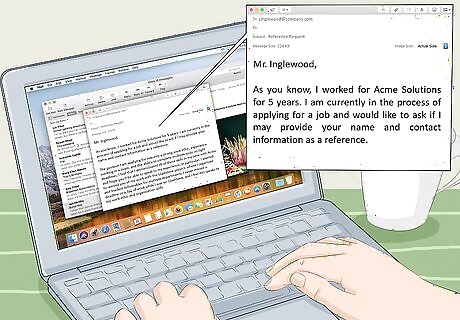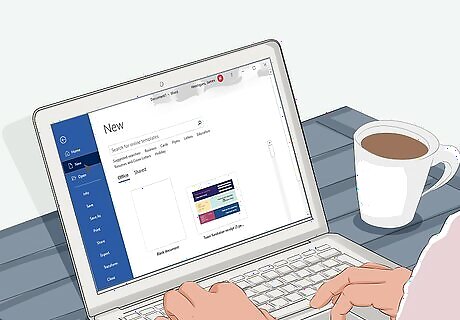
views

Make sure your references know that you will be using them as references. Do not give out their contact information to potential employers unless they give you their explicit permission. When asking your references for permission to give out their contact information, make sure that they plan on giving a positive recommendation. It’s also a good idea to ask your references how they would prefer to be contacted (ex. email, work phone, cell phone, etc.).

Use a separate page for your references. You don't need to have "References available upon request" at the bottom of your resume. Employers will assume you have references and will ask for them specifically - usually at the end of the hiring process. Unless you are applying to be a nanny, personal assistant, or something with a similar level of one-on-one interaction, the main body of your resume should not even mention references.

Start your reference list with a heading. The heading should include your name in a clear, bold font. In a slightly smaller font beneath that, you should include your address, phone number, and email. For aesthetic reasons, you can align your contact information to the opposite corner, as below. You may also want to add a line underneath the heading in order to clearly separate it from the rest of the document. If you include a line, choose one that is simple and elegant. For a more cohesive, professional look, maintain the same style and formatting that you used in your resume.

Under the heading, add a clear title. The title should be in a slightly larger font - about the same size as your name is in the header. Choose a simple, clear title that reflects the content of the page. "Professional References for (Your Name)" is a good example.

List your references and their relevant information. There are no hard rules for what order to list your references. It can be handy to list your "best" references first - that is, references that are extremely positive and that have worked with you for the longest. Begin your reference list by listing the name of the first reference in bold. In the line beneath that, write their relationship to you and the company you both worked at. Include the work address beneath that – provided that they still work at the company where you both worked together; If they do not, leave the work address out and remember to check to make sure that your contact information is current. If your reference has agreed to be contacted by phone, list the phone number next. Remember to indicate whether the number is for a work phone or cell phone. If your reference has agreed to be contacted by email, include the e-mail last (as email is less personal than a phone call).

Format any additional references in a similar way. If you have experience in multiple fields of work, breaking your reference list into several subsections, one for each field, will make the page easier to read for your employer. Keep in mind that references that you gained while working in a field of work that differs greatly from the one you are applying for shouldn't be listed.




















Comments
0 comment